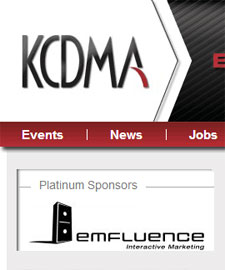 In light of the new year, I thought it’d be good to go back to some Search Engine Optimization (SEO) basics. I’ve had the revelation that after all of that hard work becoming “grownups”, it turns out, just like our high school years, the Internet is a popularity contest. At least where Content Marketing is concerned. Although Google is attempting to give everyone 15 minutes of fame, too many websites exist for each keyword. The good thing is, search engines want your site to succeed, so they have introduced the concepts of Page Rank and Relevance. Page Rank is an old-fashioned popularity contest; how many “popular” sites link to your site through back links. Relevance connects your site content to the search query. Relevance is what SEO efforts target when specific keywords are researched. Practicing general SEO is kind of like enrolling and beginning high school classes; using link building techniques is like getting noticed by the “cool” kids.
In light of the new year, I thought it’d be good to go back to some Search Engine Optimization (SEO) basics. I’ve had the revelation that after all of that hard work becoming “grownups”, it turns out, just like our high school years, the Internet is a popularity contest. At least where Content Marketing is concerned. Although Google is attempting to give everyone 15 minutes of fame, too many websites exist for each keyword. The good thing is, search engines want your site to succeed, so they have introduced the concepts of Page Rank and Relevance. Page Rank is an old-fashioned popularity contest; how many “popular” sites link to your site through back links. Relevance connects your site content to the search query. Relevance is what SEO efforts target when specific keywords are researched. Practicing general SEO is kind of like enrolling and beginning high school classes; using link building techniques is like getting noticed by the “cool” kids.
Link Building 101
2014 is the year to get noticed by the cool kids. Let’s look at link building through 6 basic steps:
Step 1: Create good (preferably great) content.
Creating great content means writing content that people want to share. Here are a few ideas of content types to dive into in 2014 if you haven’t yet (including some you’re hopefully already doing):
- Start a blog.
- Participate in social media and engage with your customers.
- Utilize Google Maps to compile useful information like locations or local events for a city or area.
- Host a contest on your website.
- Supply and explain complex data in a simple form, such as an infographic.
- Create a whitepaper, case study, or other downloadable, printable resource.
- Write articles and submit to content aggregators, such as StumbleUpon, Digg, Reddit, or many industry specific aggregators.
- Offer to write a guest blog post.
- Create a simple interactive tool, like a calculator for your industry, for example, a mortgage calculator if you’re a mortgage company.
- Write a how-to or tutorial.
- Make a video blog or tutorial that provides useful information to your industry.
- Create a funny video and host it on your own website (not YouTube).
- Create and host a funny or informative image or graphic.
- Create a best-of list.
- Have your CEO write a letter to him/herself.
- Live-blog/live-tweet at industry events.
- Interview someone noteworthy (or many someones).
- Aggregate helpful content you’ve found around a specific topic.
- Write an entertaining and/or educational quiz.
- Make an online game hosted on your website.
- Write content on the topic of being/staying environmentally green. (The concept of sustainability has created an awesome and active community!)
Step 2: Find new websites for potential partnerships and long-term relationships.
The easiest way to find potential link partners is to find out who’s already linking to your competitors for the keywords that you’re targeting in SEO. Use a tool like opensiteexplorer.com to “scrape” and find all of your competitors’ inbound links that use those keywords. The goal is to compile as big a list as possible. Then, check each website or URL’s PageRank using a tool that can bulk process a large list of URLs, for example, http://pagerank.my-addr.com/.
Step 3: Begin building relationships via “preciprocation.”
 Preciprocation refers to the idea of promoting the content of others before they ask for it. Promote others and they will (most likely) promote your content in return, earning you a coveted backlink. More lessons learned from childhood, this is basically “Do unto others as you wish they would do for you.” The link building process is all about networking. Relationship-building in the offline world can lead to huge benefits online. What connections does your business have already that can help build additional links? Do all of your business partners have a link back to your site from their own? Do you sponsor any charities or schools? Try some of these ideas to use networking to grow your influence and connections:
Preciprocation refers to the idea of promoting the content of others before they ask for it. Promote others and they will (most likely) promote your content in return, earning you a coveted backlink. More lessons learned from childhood, this is basically “Do unto others as you wish they would do for you.” The link building process is all about networking. Relationship-building in the offline world can lead to huge benefits online. What connections does your business have already that can help build additional links? Do all of your business partners have a link back to your site from their own? Do you sponsor any charities or schools? Try some of these ideas to use networking to grow your influence and connections:
- Sign up for HARO (help a reporter out), a site designed to connect resources for reporters’ stories, giving you the opportunity to be the expert quoted in their article.
- Help bloggers share your content by offering a shortened URL and an option for automatically sharing via social media or a reference on their site.
- Contact business partners to ask them about linking to your site. If a company sells your product, they should link to your site as well.
- Ask customers to link back to your site where appropriate.
- Ask friends/family for a link.
- Contribute valuable comments on popular or important blogs.
- Attend industry events and build offline relationship that can turn into online relationships.
- Offer pro bono work for your favorite charities or universities and ask for a link to your services on your website in return. (.Org and.edu links are very powerful!)
Step 4: Document all potential relationships.
Document all potential relationships and any collected information to ensure you can reach out with relevant information to each partner. You don’t want to “SPAM” during your link building efforts. Your goal is to personally, genuinely build links in the quickest way possible.
Create pitch or ask templates to help save time and to learn what works in earning links. Your link-building document should include the page URL of your potential partner, that URL’s PageRage, contact information for the partner, the dates you’ve reached out, and, of course, your response rate. Your outreach efforts have to be measured in order to be constantly learning and improving!
Step 5: Personally contact potential link partners.
Once you have targeted partners and the information you need to prioritize and reach out, start using your pitch templates and preciprocation to build backlinks in bulk. Start with a small sample of potential partners, maybe 5-10%, to test your pitch emails and track response rates. Once you learn what works with this test group, you can dive into a long-term content promotion campaign to grow traffic to your blog, website and your best-performing content.
Step 6: See step 1.
Now that you have your process in motion, continue your link building efforts using what you’ve learned from your first outreach campaign. Expand to additional keywords and locations to mine additional potential from the 2.01 billion pages currently indexed on the World Wide Web.
Ok, so making new friends is a little scary. Over time, though, we become a bit better at forming relations, and so link building gets easier over time. As you build more links and relationships, a snowball effect happens: your connections turn into more connections and partnerships. Nothing in search engine optimization is guaranteed, but it’s a good bet that link building will drive new visitors through the online version of the good old fashioned offline referral.
Beware: Also kind of like high school, Google judges your website by those you associate with, so do your homework and only partner with reputable sites that follow ethical online and search engine practices.




Great checklist – definitely mining some new ideas I can execute this minute! Question: is a link back visible to site visitors, a la “Favorite Sites” or a “Resources” page? Or is this happening behind the scenes? Or is it as simple as what I’m doing now, which is when speaking of a favorite author, for example, in my blog, I link to their site at that time, and tweet them to draw attention to the shout? Thanks for Tyler!
Hi Dodie! Backlinks will always be visible under normal practices and can be either a mention in a blog (as you mentioned) or anywhere on a site. We want to have links be visible and flow good “PageRank” to our site. Hopefully we can get both referral traffic AND improved rankings from our link building efforts!